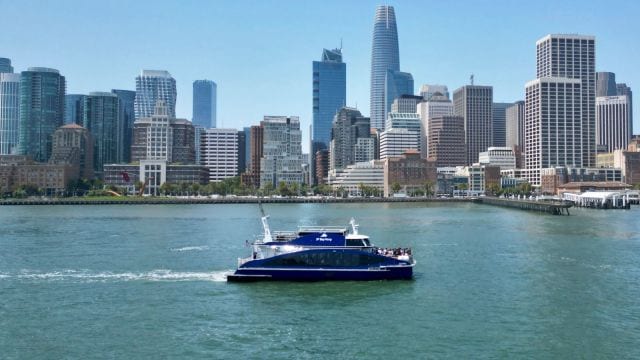The MV Sea Change, the world’s first commercial passenger ferry powered entirely by hydrogen fuel, was launched on Friday at the San Francisco Ferry Building. This groundbreaking 70-foot catamaran can transport up to 75 passengers along the waterfront between Pier 41 and the downtown San Francisco ferry terminal starting July 19.
Environmental Impact
Unlike traditional diesel-powered ferries that emit pollutants, the hydrogen-powered Sea Change produces only heat and water vapor as byproducts. Remarkably, passengers can even drink the emissions from an onboard water fountain. As part of a pilot program, the service will be free for the first six months.
Potential and Future Implications
Jim Wunderman, chair of the San Francisco Bay Area Water Emergency Transportation Authority, highlighted the broader significance of this innovation. “The implications for this are huge because this isn’t its last stop,” he said. “If we can operate this successfully, there are going to be more of these vessels in our fleet and in other folks’ fleets in the United States and we think in the world.”
Technical Specifications
The Sea Change can travel approximately 300 nautical miles and operate for 16 hours before needing to refuel. The hydrogen fuel cells generate electricity through an electrochemical reaction that combines oxygen and hydrogen.
Project Details
The project was financed and managed by SWITCH Maritime, with the vessel constructed at Bay Ship and Yacht in Alameda, California, and All-American Marine in Bellingham, Washington. Officials hope this technology can significantly reduce the shipping industry’s carbon footprint, which accounts for nearly 3% of the world’s total greenhouse gas emissions.
Industry Impact
Frank Wolak, president and CEO of the Fuel Cell and Hydrogen Energy Association, emphasized the broader impact of this technology. “The real value of this is when you multiply out by the number of ferries operating around the world,” he said. “There’s great potential here. This is how you can start chipping away at the carbon intensity of your ports.”
Multiple Choice Questions (MCQs):
- What is the main power source for the MV Sea Change?
- A) Diesel
- B) Electricity
- C) Hydrogen
- D) Solar Power
- How many passengers can the MV Sea Change transport?
- A) 50
- B) 60
- C) 75
- D) 100
- What are the byproducts of the hydrogen fuel cells on the Sea Change?
- A) Carbon dioxide and heat
- B) Water vapor and heat
- C) Methane and water
- D) Nitrogen oxides and heat
- For how long will the MV Sea Change service be free as part of the pilot program?
- A) Three months
- B) Six months
- C) One year
- D) Eighteen months
- Who is the chair of the San Francisco Bay Area Water Emergency Transportation Authority?
- A) Frank Wolak
- B) Jim Wunderman
- C) John Doe
- D) Jane Smith
